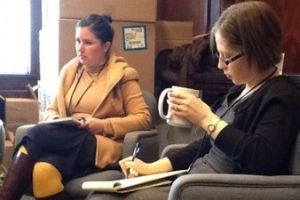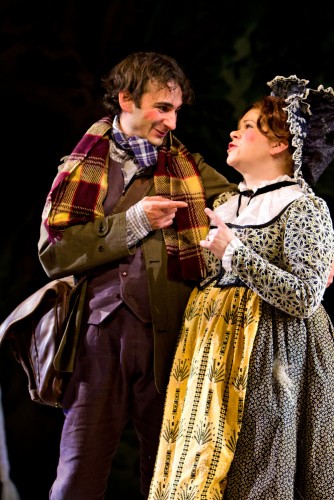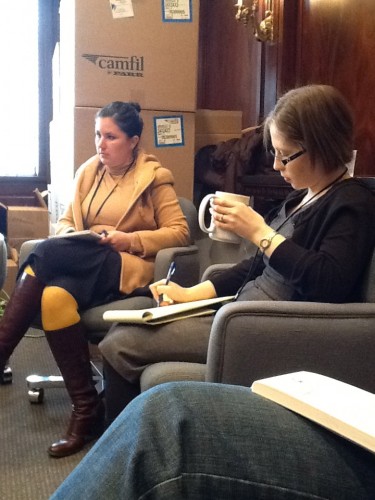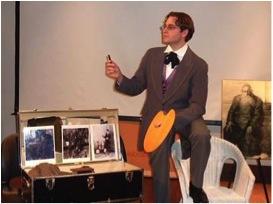The Power of Storytelling

 By Amy Smith, JMM Development Coordinator
By Amy Smith, JMM Development Coordinator
Last weekend, a group of friends and I went to see Stephen Sondheim’s Into the Woods at Center Stage. At first I was hesitant to attend Center Stage’s version of this classic, as nothing, in my mind, could live up to the original Broadway production starring Bernadette Peters as the Witch. Further, I knew the lyrics and music would be stuck in my head for a long time after, which of course did not stop me from cueing up the soundtrack on my iPod as soon as we ordered our tickets.
However, this production left me with a deeper understanding of the power of stories. For those of you who stay far, far away from musicals, Into the Woods is about a baker and his wife who are desparate to have a child. The plot also integrates the stories of Little Red Riding Hood, Jack and the Beanstalk, Rapunzel, and Cinderella. Towards the end of the play, the Baker is overcome with grief after his wife is killed by the Giant and he is left alone to raise their newborn son. In his moment of despair, the Baker’s Wife returns in spirit form to tell her husband that he must tell their child the story of the Woods because actions have lasting consequences on future generations. This idea of storytelling is mirrored within the set itself; the Narrator moves a diorama sized version of the stage around the actual stage, enforcing the idea that we are watching a play within a play.

Storytelling seems to be a popular theme lately in the museum field as well as in theater. The theme for next year’s American Association of Museum’s Annual Meeting in Baltimore is storytelling, and the JMM’s Student Immigrant Stories program was a hit at Museums Advocacy Day in Washington, D.C. back in February. This spring, Jewish storyteller Jennifer Zunikoff is conducting a workshop with Museum staff and volunteers in how to facilitate storytelling. These weekly workshops have become something that I look forward to, perhaps because it allows me to unleash my inner theatre geek.

I’m certainly not the only JMM staffer with an appreciation for theater. On March 15, the JMM held a Saul Bernstein living history performance. During this performance, the actor playing Bernstein told his story of being a Lithuanian peddler, immigrating to Baltimore at the turn of the 20th century at MICA, and going on to become an accomplished painter. The program paid tribute to Tim King, who originated the role of Saul Bernstein; introduced a new actor, Grant Cloyd; and thanked Harry and John Kassap of the Leo V. Berger Fund for their support of the Immigrant’s Trunk program. The program was a success and each and every one of the 25 audience members who attended was engaged and captivated by the story.

If you couldn’t make it to the Saul Bernstein program, never fear, there is another opportunity to attend theater at the Jewish Museum of Maryland in the near future. On April 19th at 7 pm, the Jewish Museum of Maryland is premiering Teibele and Hurmizah, a Yiddish and English adaptation of Isaac Bashevis’ erotic story. This production is directed by Johns Hopkins undergraduate Tamar Nachmany. To make reservations, please contact Rachel Cylus at rcylus@jewishmuseummd.org or call 410-732-6400 x215. Hope to see you there!

